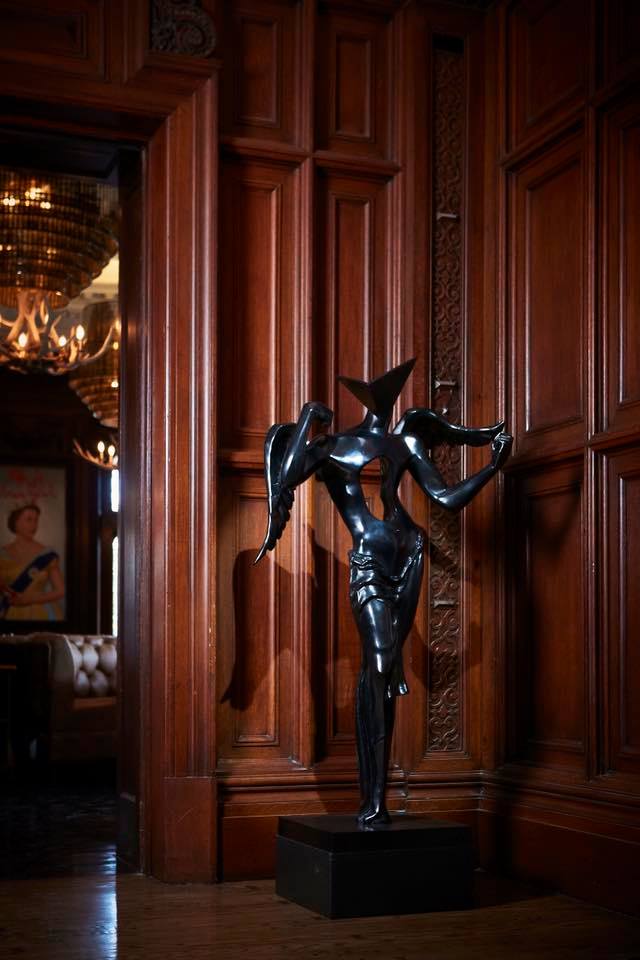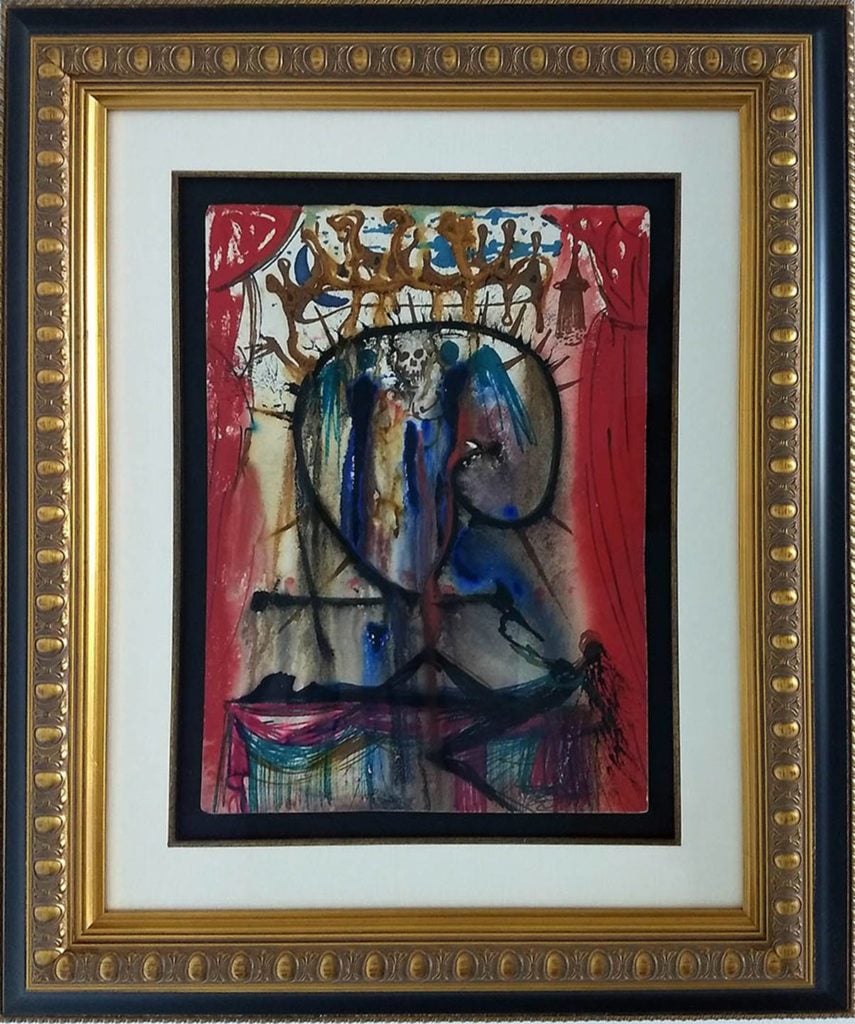Why These Three Symbols Fascinated Salvador Dalí


Artnet Gallery Network

Melting clocks, grasshoppers, lobsters, and chests of drawers—Salvador Dalí had an extensive lexicon of favored symbols. This summer, Robin Rile Fine Art is presenting a range works by the outlandish Spanish artist, each a window into Dalí’s unique world of symbols.
Below, we take a close look at these works to explore three of the motifs that obsessed the self-proclaimed “madman.”

Salvador Dalí, Surrealist Angel (1983). Courtesy of Robin Rile Fine Art.
Angels were particularly meaningful to Dalí. The Surrealist often pictured his wife and muse Gala as a winged being, and in his writings, he mused frequently on angels. In a diary entry from May 1953, the artist wrote, “I have drawn from sunrise until the evening six faces of mathematical angels, explosive, and of such great beauty that I remained exhausted and stiff.”
In sculpture, Dalí created both Cubist and Surrealist versions of his angels, but always.with smooth, androgynous bodies that were in keeping with the artist’s theories on mathematical symmetry and the supposed asexuality of angels (the artist himself often claimed to be asexual). In the sculpture shown above, Dalí has created a variation on the base of the 3rd century classical Greek sculpture Winged Victory or the Nike of Samothrace, now in the collection of the Louvre.
This Surrealist Angel provides a glimpse into what he felt his own “Nike” was meant to symbolize. The hole in the angel’s chest is Freudian metaphor, intended as a window of light meant to inspire viewers to see beyond what is first visible. Here, this incision resembles an inverted guitar. Dali believed music to be the most direct way of communicating with God… which brings us to the next symbol.
Musical instruments can be found throughout Dalí’s oeuvre. In a particularly outlandish scene in Un Chien Andalou, the 1929 Surrealist film made by Dali and filmmaker Luis Buñuel featured, a male figure drags two priests alongside a dead horse flung atop a piano in a bizarre image that joins music, mortality, and the Divine.
In the book Dalí, Dawn Ades wrote that pianos symbolized “the whole weight of a decaying society changing the free expression of the man’s desire” (D. Ades, Dalí, London, 1995, p. 53). In the Piano of Mozart, shown above, Dali has melded together two of these favorite images, painting a heraldic angel unto the lid of the Steinway piano.

Salvador Dalí, The Marriage of Romeo & Juliet by Death (circa 1967). Courtesy of Robin Rile Fine Art.
Later on in his career, Dalí adopted the crown as a shorthand signature—but his crown was not just any old crown. Fascinated by both illusion and science, the artist was captivated by a famous 1946 stroboscopic photo of a drop of milk by American engineer Harold Edgerton, in which the splash appears to take the shape of a coronet. He based his image on that famous close-up. Both a Catholic and a supporter of monarchy, Dalí saw a variety of literary, religious, and theatrical connotations in the shape.
The painting above depicts the key moment in Shakespeare’s Romeo and Juliet when the two young lovers are united in death, their souls facing each other, with the skull of death, presiding over the moment. Dalí’s crown hovers above it all, presenting the artist as a kind of omniscient guide.